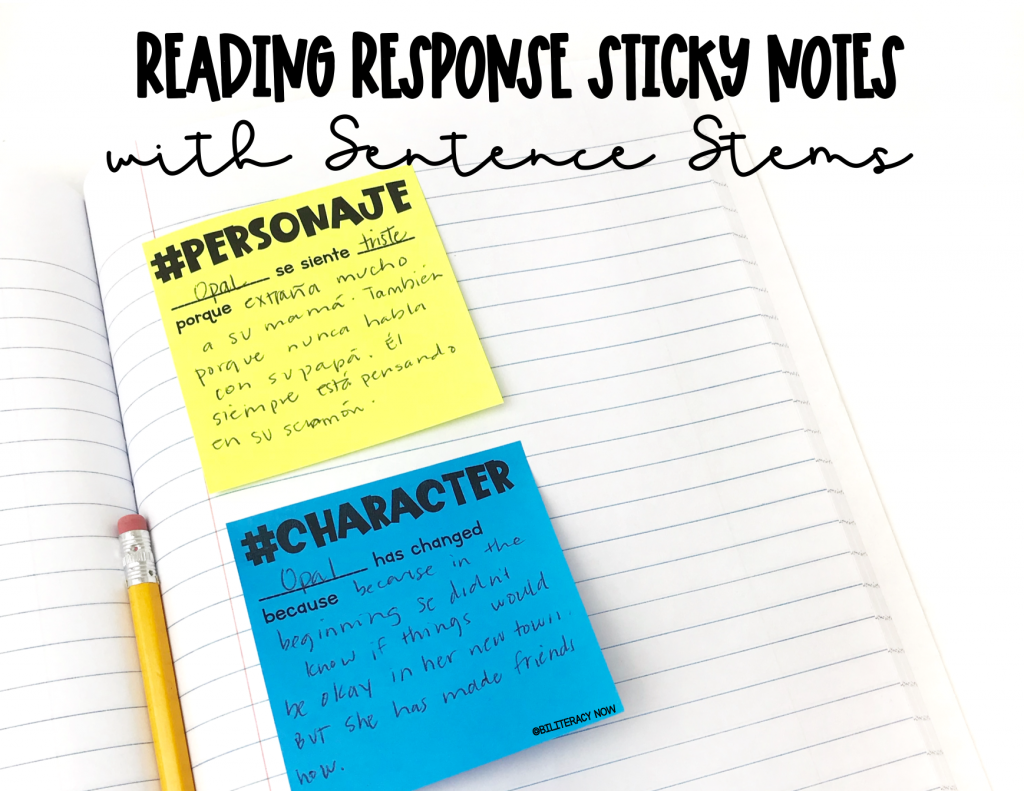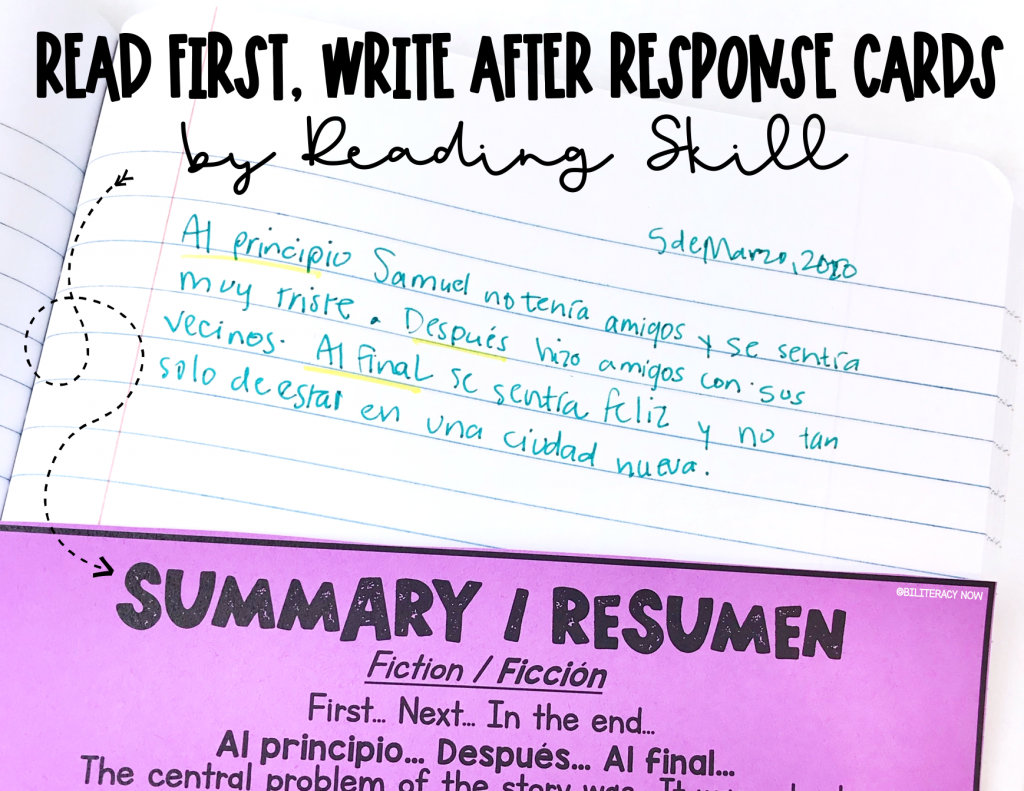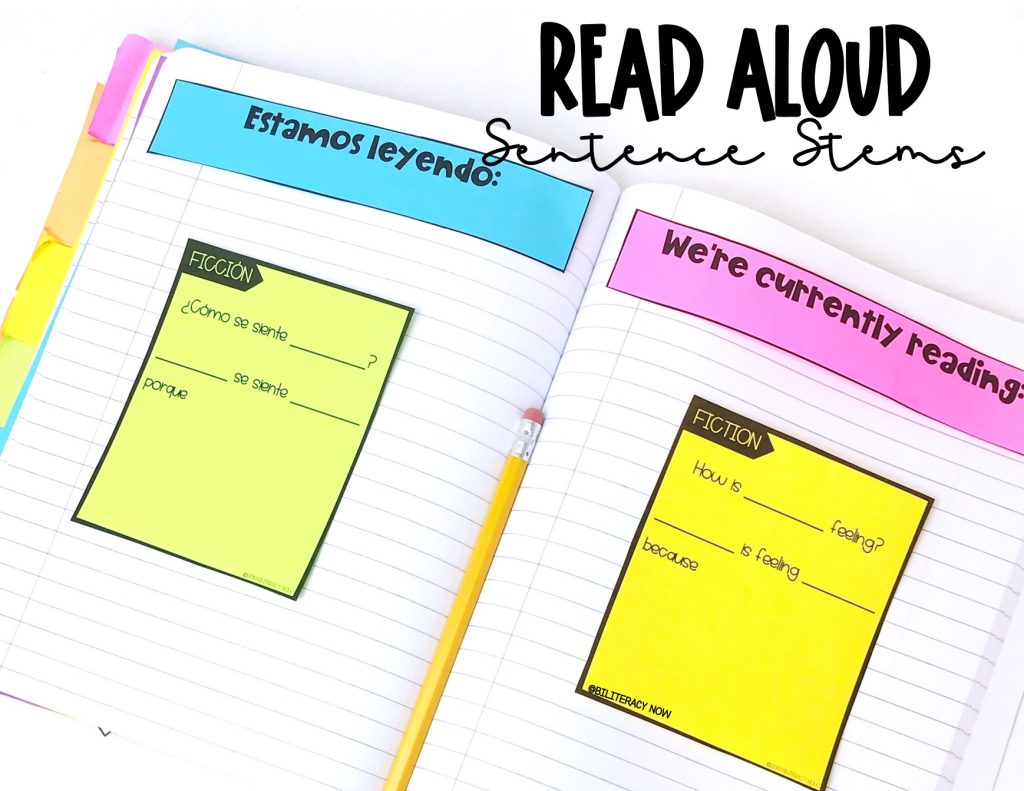Writing about reading is one of the best ways to blend the two subjects together. In my opinion, writing should be a huge part of your reading block. There are many ways to get started with reading responses that can be implemented as early as today. Remembering that they only work if you model what the expectation is for each activity and you stay consistent. So, keep reading to learn how three different types of reading responses have worked with my students!
STICKY NOTES
One way to encourage writing about reading is to give them sticky notes. I’m not sure what it is about stickies, but students sure do love them! Yes, you can give students blank sticky notes, but I like adding sentence stems to mine because I feel it raises the quality of their responses. Plus, it reminds my students to write in complete sentences. To make the sticky notes feel “cool and hip,” I added hashtags! Click here to check them out in my TPT store.

Don’t forget to have a system in place for how you want them to be organized. At the beginning of every school year, I have my students create a tab in their reading journals labeled Reading Responses – their sticky notes go in that section of their journals.
BILINGUAL READING RESPONSE CARDS
Reading responses also work when you give students more freedom on what to write about by giving them many options. These cards, categorized by reading skills, have been a real game changer for my kiddos! I recommend you put them on a ring and then add it to the table bin so students can share. While they’re independently reading, they stop, grab these cards, and look for a skill that they want to write about. Their responses are then recorded in their reading journals. Each card includes 3-5 sentence stems in Spanish and English to help them get started. See the example below. You can click here to check them out in my TPT store.

READ ALOUD QUESTION STEMS
These are a big hit with my students and probably one of my favorites. They do require some prep time, but it’s worth it! And in case you’re wondering, it’s OK to informally assess your students’ listening and comprehension skills during a read aloud. No, I don’t recommend doing this every day because who has the time? However, they’re a great way to, again, raise the quality of reading responses.

I print the slips ahead of time and keep them in a tiny bucket near my read aloud spot. Periodically (maybe 1-2 times per week), I ask the students a question that requires a written response at the end of my read aloud and hand these out. They write their answers and share out with their literacy partners. Afterwards, they go back to their desks and glue them in their journals as they transition to the next block or station. It might see like a lot at first, but I promise that if you stay consistent, it works! Click here to check them out.
Finally, don’t forget to use these as a reteaching tool. Take the time to study their responses a few times a week and start planning your small groups based on who you think needs the extra push. As always, make each of these feel like an organic part of your day.
Questions or comments? Leave them below!